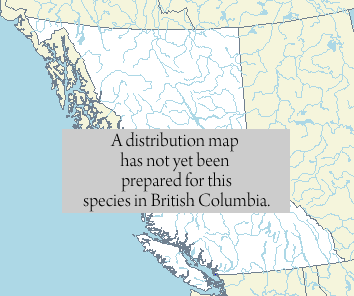Killer whales are one of the most exciting whales to watch. Whether they are travelling, resting, hunting, beach rubbing, or playing with each other, there is always plenty to see. B.C.’s resident killer whales are especially interesting because we know so much about them. In 1972, researchers began taking pictures of individual whales. From these photos, and by watching who travelled with whom, they learned that family life centres around females, and that a mother and her calves stay together for life. Even when they’re fully grown, sons and daughters never stray far from their mothers. Some killer whales, particularly females, can live as long as humans. Using all this information, researchers have put together family trees for all of B.C.’s resident killer whales. Family members within a pod are each identified by a letter and a number. This is very handy for researchers and whalewatchers. By identifying one whale in a group, they can often tell which family they are looking at.
Sound is very important to killer whales. Using air trapped in their blowholes, they produce high-pitched squeals, squawks and screams that often sound like a squeaky door hinge. Each family group of whales has its own set of unique sounds, or discrete calls, which together form its dialect. Some dialects are so distinctive that even an inexperienced listener can tell them apart. Researchers believe that the more similar the dialects between two pods, the closer they are related. Killer whales also make clicking sounds which they bounce off objects in the water. This is a type of natural sonar called echolocation and is very useful when searching for food or navigating in murky water. Little is known about mating behaviour in wild killer whales. Females usually have their first calf at age 14 or 15 after a 17-month pregnancy — one of the longest of all whales. Newborn calves are 2.5 metres long and 200 kg, and drink their mother’s fat-rich milk for up to a year.
|
Resident killer whales eat mainly fish. Their dorsal fins tend to be rounded at the top. They live in family groups of 5 to 50 whales, called pods. There are 19 pods of resident killer whales in B.C., adding up to about 300 animals. Transient killer whales eat marine mammals, such as seals, sea lions and porpoises. Their dorsal fins are more pointed. They usually travel in small groups of two to four animals who may or may not be related to each other. What may be a third type of killer whale has been discovered in recent years. Researchers call them offshore killer whales, but since they have not been seen very often, very little is known about them. They are unlike residents and transients in a number of ways. There are slight physical differences, they usually travel in groups of 25 or more, they are seldom seen in protected coastal waters, and their vocalizations are unlike those of residents or transients.
Killer Whales can tolerate wide ranges of salinity, temperature and turbidity (COSEWIC 2008) and are found in nearshore and pelagic habitats. Their overall distribution appears to be determined mainly by their prey species.
|
|
